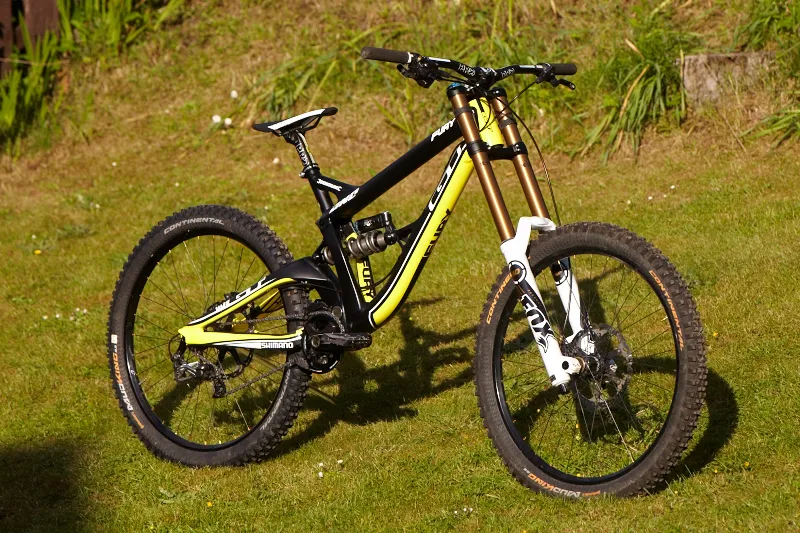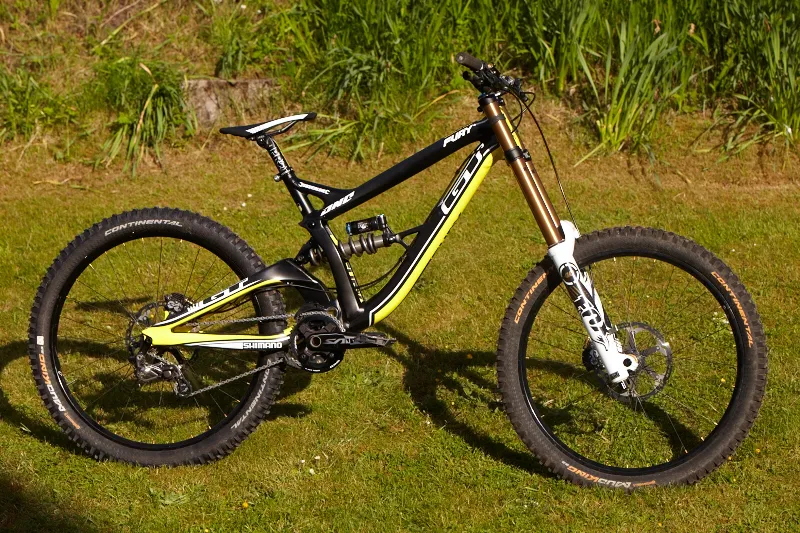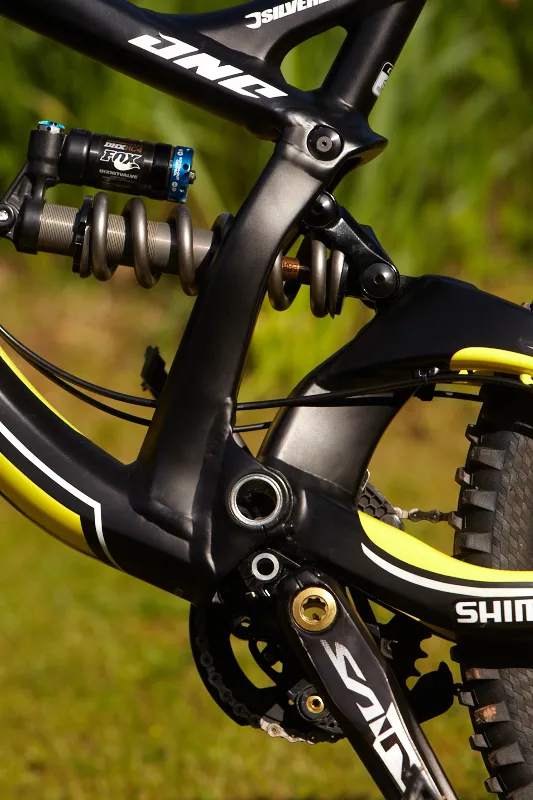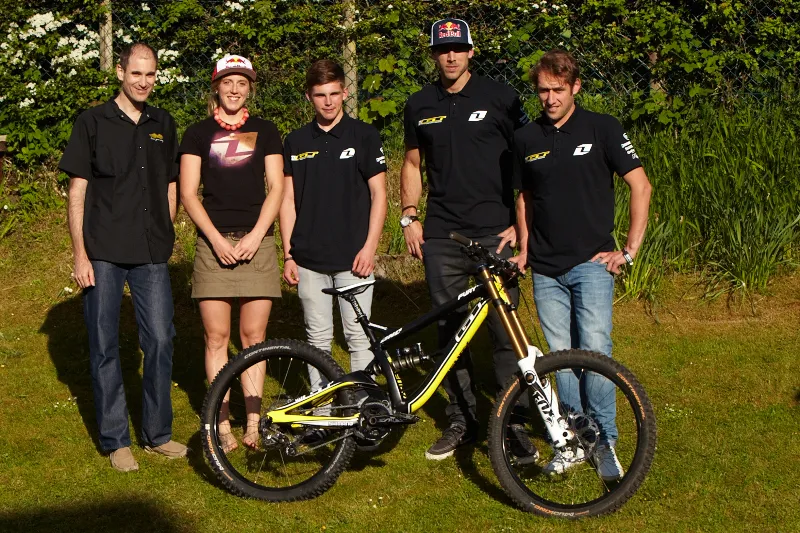With the rugged beauty of Scotland's Nevis mountain range as a backdrop, GT unveiled the new Fury downhill bike just ahead of the first round of the 2013 UCI Downhill World Cup in Fort William.
This weekend, GT team riders will be aboard the newly revamped Fury downhill machine, which sees some drastic changes over the previous full-carbon machine, including moving to an alloy frame.
Although the current carbon Fury isn’t short of race pedigree – Marc Beaumont piloted it to a breathtaking win in Val Di Sole World Cup in 2010, while Rachael Atherton managed scoop the World Cup overall title in 2012 – its geometry had become a little outdated and something bang-up-to-date was needed to tackle the current crop of high-speed, steep and super-technical downhill tracks.

The GT Fury: longer, lower and slacker for 2014
All change for 2014 - but 26, not 27.5 wheels
Let’s clear up a couple of things early on; no, it’s not made of carbon, and no, these are not 650b wheels. Why aluminium? Because it was the fastest (and least expensive) way to make changes to the Fury based on rider feedback, as new carbon molds aren't cheap or easy to create. That said, GT were quick to note having already developed the first very successful carbon DH bike, there’s still scope for the new Fury to get the carbon treatment later down the line. As for the 26in rather than 650b wheels, GT say it’s still early days for 650b wheels/frames in downhill and will continue with the proven 26in for the time being.
The new Fury was developed around five facets: fit, function, suspension tune, the bike's spec and its geometry.

GT is holding the line on 26in wheels
“With the engineering approach we took when designing the new Fury, there were three things we set out to achieve," said marketing manager Clive Gosling. "That was to go faster, and faster and faster. The end result is that we’ve got a bike that goes seriously f—ing fast."
The end result is a new Fury that has modern, progressive geometry, a jump up in suspension performance, and a redesigned Independent Drivetrain system made specifically for gravity riding. Plus, GT say, it's stiffer and lighter than the previous carbon Fury, too.
Longer, lower and slacker
As we’re seeing with the current crop of not just downhill bikes but trail bikes also, the new Fury gets longer, slacker and lower for 2014.
The front centre has been stretched and when paired with the short 432mm (10mm shorter than 2013), still produces a 1231mm (48.5in) wheelbase on the medium sized frame. The longer front centre is designed to work with a short 35mm stem for maximum steering reactivity. The change in front centre was something racers Gee, Marc and Rachael Atherton were all keen to see for the new bike, stating the previous model could feel a little cramped. Marc and Rachael actually switched from a medium carbon Fury to a large in a bid to improve stability and cockpit room and both riders saw a marked leap in their times after the switch.
In order to handle the steeper and faster tracks on the circuit, the head angle gets kicked out to 63 degrees while the bottom bracket is dropped a full 20mm, now giving a BB height of 349mm (13.7in) which should improve the Fury’s cornering prowess.
Suspension
GT improves the small-bump sensitivity, they claimed, by reducing the breakaway threshold during the suspension's initial stroke, helping the bike track the ground's contours and fight for every last ounce of grip.
Following rider feedback, the end of the suspension stroke was made 10 percent more progressive to help avoid harsh bottom-outs. Travel also went from 210mm to 220mm.
The reworked Independent Drivetrain (I-Drive) system has a claimed 50 percent reduction in pedal feedback (at sag) over the previous model, and is more compact, lighter and stiffer.

The newly overhauled I-Drive is lighter, stiffer and more compact than the current model
Speaking of lighter and stiffer...
Both the bottom bracket and head tube area are stiffer for 2014, producing more efficient pedalling and more precise handling respectively.
Additionally, the Fury shed some considerable weight for 2014. It’s claimed to be 300g lighter than the carbon 2013 frame and 500g lighter than the 2013 alloy version.
This is all achieved thanks to the complex hydroformed 6061 alloy tubing and asymmetric frame design, along with using thru-axle pivots, spreading the main and I-Drive pivot bearings as far apart as possible, a 12x150mm rear axle with pinch bolts either side and the linkage that helps protect the shock from side loads.

Engineers and racers collaborated on the design of the 2014 GT Fury


